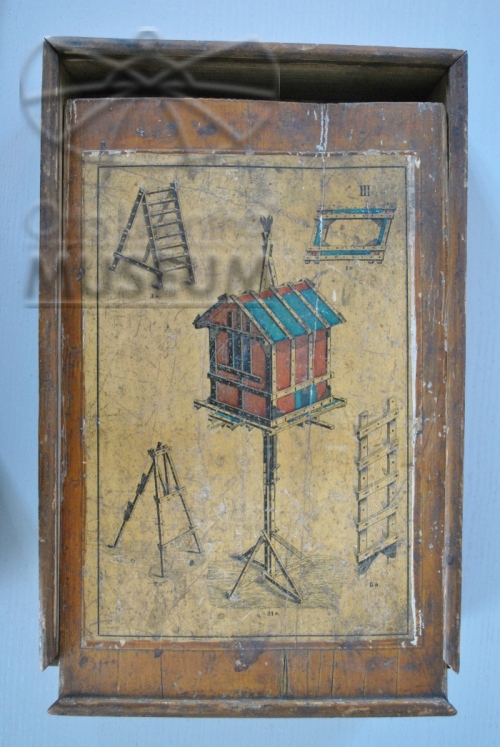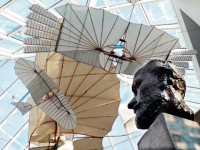Der Modellbaukasten ist nach seiner später als Anker-Steinbaukasten weit verbreiteten Erfindung die zweite große Baukastenentwicklung Gustav Lilienthals, die allerdings ebenfalls auf Otto Lilienthal patentiert wurde. Ähnlich dem Steinbaukasten aufgebaut und in verschiedenen Größen lieferbar. Sehr selten erhalten, hier der Typ III. Das Patent von 1888 ist dem des späteren Erfinders des "Erector-Sets" (1901) sehr ähnlich. für Lilienthal war es jedoch ein Architekturkasten, also ohne bewegliche Teile (Achse für Auto, Mühle). Im Gegensatz zum späteren Metallbaukasten waren aber durch seitliche Nuten und Papptafeln geschlossene Fachwerk-artige Bauten möglich. Im Gegensatz zum Metallbaukasten erfolgte die Verbindung durch verkeilte Splinte.
en

